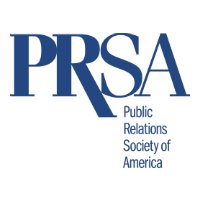The public relations profession under siege
MANILA, Philippines—In the recent Senate hearing when the alleged brains of the pork barrel scam, Janet Lim Napoles, testified, Senator Miriam Defensor Santiago unleashed an unsavory attack on the PR profession saying, “there are press agents, cockroaches or assholes who go around the media, paying journalists to attack the rivals of their bosses or protect their bosses. They buy the media even the editors.”
Santiago was understandably upset by personalities she mentioned during the hearing that reportedly used campaigns to personally attack her.
Let us at the very onset draw the line. The PR profession has been tainted all these years precisely because of the conduct and tactics of personalities who masquerade as practitioners and give the profession a bad name. These are the fly-by-night operators who sprout out in droves especially during the campaign season.
The website of the Public Relations Society of America (PRSA) so aptly describes the state of PR practitioners saying that “our profession is among the most misunderstood and criticized. Through their high professional and ethical standards, accredited professionals contribute to greater understanding of public relations as a vital management function, and undermine those who would refer to our craft as spin, our professionals as flacks, and our currency as misrepresentation and disinformation.”
When PRSA refers to accredited professionals, they refer to about 5,000 all over the US that have earned the title “APR” or accredited in public relations. In our country, only 46 have earned the title so far since accreditation started in 1995.
What are the benefits of accreditation to begin with? A renowned peer in the industry shares his thoughts saying that an APR is a “confirmation by his peers that he knows the magnitude of his responsibility; that he is ethical; that he has a body of works to prove his competence; that he has proved his worth as counsel for top management; and that he has occupied senior positions and can deliver results.”
The Accreditation program established by PRSA in 1964 is “the profession’s only national post-graduate certification program. It measures a public relations practitioner’s fundamental knowledge of communications theory and its application; establishes advanced capabilities in research, strategic planning, implementation and evaluation; and demonstrates a commitment to a professional excellence and ethical conduct. The skills acquired through the process are applicable to any industry or practice area.”
Candidates are nominated by peers and applications are not honored. After submitting the body of works, there is a meticulous scrutiny of one’s employment record, with great emphasis given to experience in a senior management position. The candidates then go through a seminar followed by a rigorous written examination which takes close to a day to complete. Successful candidates then face the ordeal of an equally tough oral exam.
The Public Relations Society of the Philippines (PRSP) is at the forefront of professionalizing the ranks of PR practitioners in the country. We can expect to see the roster grow even further, especially with the establishment of chapters in the regions.
There have been discussions of late on whether there is still a need for the President of the PRSP to be an APR. This has been the practice for the past 18 years, a tradition that a colleague attributes to the quality of leadership. She goes on by saying that passing the APR exam “means you have what it takes to be one (President).”
Should PRSP stand by tradition and allow only an APR to qualify as President, which is what PRSA also requires, or should this rule be scrapped? This will be the subject of a referendum later this month on proposed amendments to the bylaws which were last done in 1998.
I, for one, believe that we should not look elsewhere to see why a PRSP President has to be an APR. While it is a PRSA invention that we have adopted, it has worked well for the Americans for close to half a century and 18 years for PRSP. And this should be good enough moving forward. As the Americans would say, “Why fix it if it ain’t broke?”
This practice is unique to us. It is who we are. It is what we are known for. Let us continue to embrace and cherish it.
The author is a consultant to the chair and CEO on corporate communications for GMA Network Inc.

